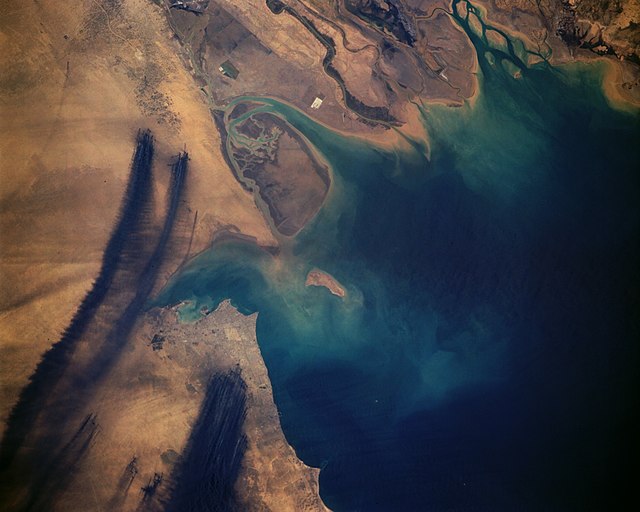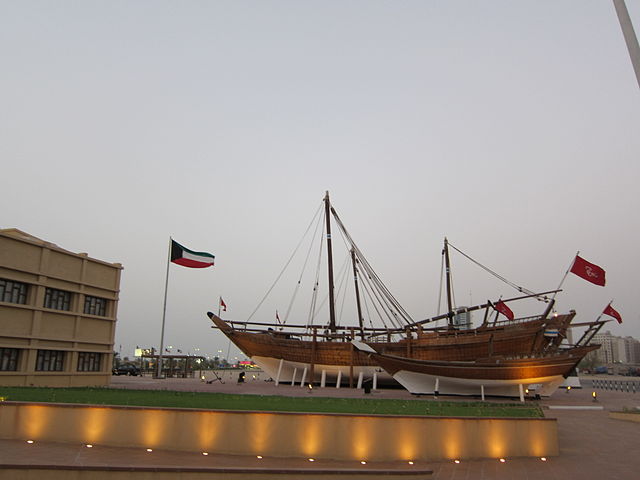The Kuwaiti oil fires were caused by the Iraqi military setting fire to a reported 605 to 732 oil wells along with an unspecified number of oil filled low-lying areas, such as oil lakes and fire trenches, as part of a scorched earth policy while retreating from Kuwait in 1991 due to the advances of US-led coalition forces in the Gulf War. The fires were started in January and February 1991, and the first oil well fires were extinguished in early April 1991, with the last well capped on November 6, 1991.
Smoke plumes from a few of the Kuwaiti Oil Fires on April 7, 1991, as seen from Space Shuttle Atlantis during STS-37.
Oil well fires, south of Kuwait City. (Photo taken from inside a UH-60 Blackhawk; the door frame is the black bar on the right of the photo)
Kuwaiti oil well fire, south of Kuwait City, March, 1991
The Kuwaiti oil fires were not just limited to burning oil wells, one of which is seen here in the background, but burning "oil lakes", seen in the foreground, also contributed to the smoke plumes, particularly the sootiest/blackest of them (1991).
Kuwait, officially the State of Kuwait, is a country in West Asia. It is situated in the northern edge of Eastern Arabia at the tip of the Persian Gulf, bordering Iraq to the north and Saudi Arabia to the south. Kuwait also shares maritime borders with Iran. Kuwait has a coastal length of approximately 500 km (311 mi). Most of the country's population reside in the urban agglomeration of the capital and largest city Kuwait City. As of 2023, Kuwait has a population of 4.82 million people of which 1.53 million are Kuwaiti citizens while the remaining 3.29 million are foreign nationals from over 100 countries.
The Achaemenid Empire at its greatest territorial extent.
Marine Museum in Kuwait City. Demonstrates the founding of Kuwait as a sea port for merchants.
The Kuwait Red Fort in Al Jahra
Celebration at Seif Palace in 1944








